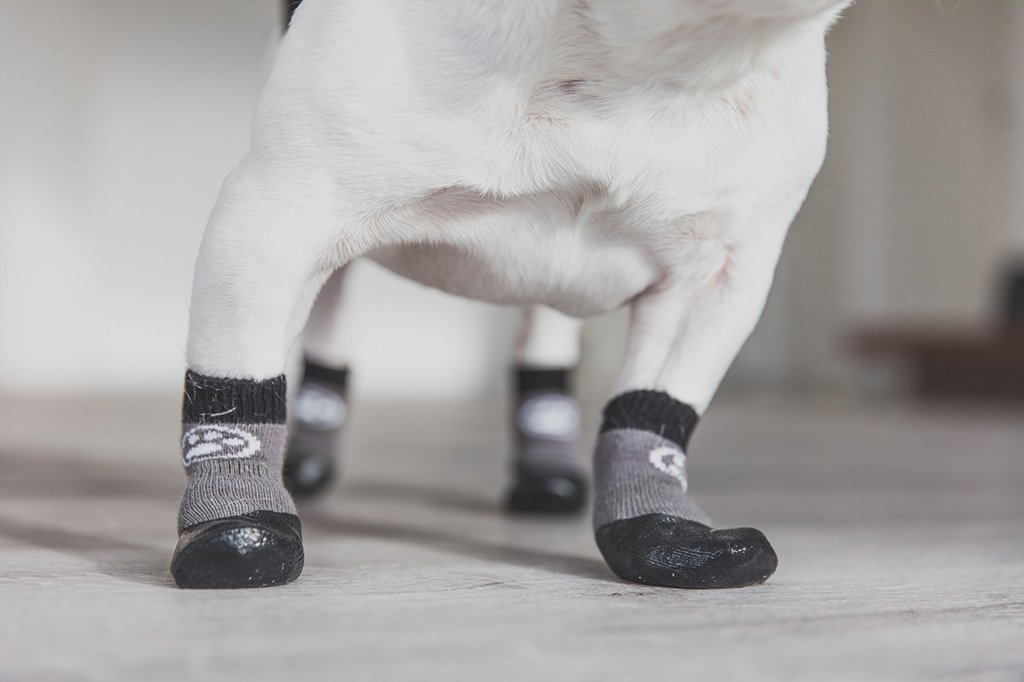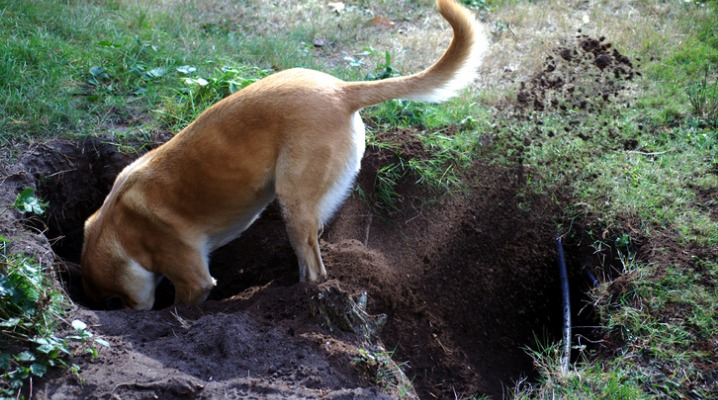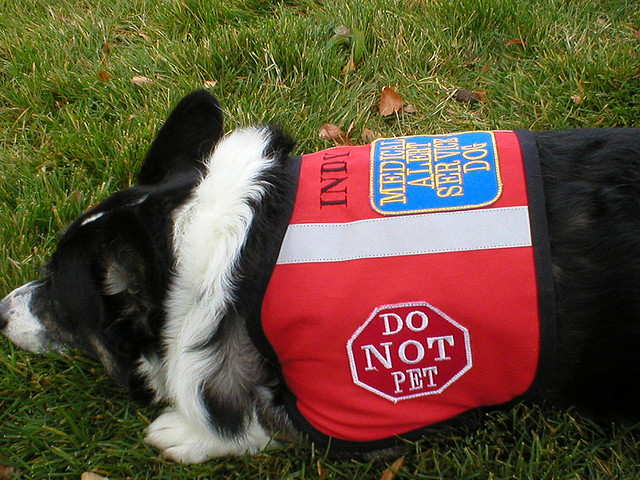Do you have a dog that likes to climb or jump the fence to escape the yard? Maybe your pup’s one of those that likes to dig a tunnel to get sprung! If you’re dealing with an escape artist dog, we’re here to help you! This article is all about finding the best type of dog fence for your furry Houdini!
Connect with a verified veterinarian in minutes. Licensed vets are available 24/7 to answer your questions. No need to worry about your furry family member.
Benefits of Fencing for Your Dog
There are many benefits to keeping your dog fenced in the yard—let’s take a look at a couple of advantages a fence can provide:
1. Keep your dog safe: fences keep your dog safe from running away, being attacked by other dogs, unwanted pregnancy, being hit by a car, being stolen or even picked up by an animal control officer. Dangers abound in the world today—you want to keep your dog safe, so be sure he has a safe, fenced area he can enjoy while outside.
2. Exercise off the leash: a fenced yard or large area gives your dog a place where he can safely enjoy being outside and off the leash. He can run around, sleep, etc. all on his own. Even so, it’s best to keep an eye on your pup just in case he decides to go for a walkabout!
Safety is the priority here, keeping your dog at home and away from the dangers of being out and about. He will be furever grateful to have some time outside to enjoy the sights and smells going on all around!
Types of Dog Fence Systems
The good news is no matter what your dog does to get out of your yard, there’s a fence that can keep him in. You just have to choose the right type of fencing to contain your fur baby.
The basic types of dog fencing available include:
- Wireless fences: these fences are truly invisible and more like a psychological barrier. You’ll find this type of fence system includes a shock collar, which shocks the dog when he crosses the invisible barrier. You’ll have to train your dog to respond properly to the shock and to not leave the yard.
- Barrier fences: create a physical barrier that’s supposed to make it difficult for a dog to escape. This type of fencing requires no electricity or special training.
- Electric fences: this type of fencing makes use of electricity to give the dog a shock when he touches it. Again, this is more of a psychological barrier and some dogs are experts at avoiding the fence and the shock if they’re determined to get out. Just like with the wireless dog fence, you’ll have to be sure to train your dog to respond correctly when he receives a shock.
- Underground fences: this is another type of fencing that makes use of electricity to keep a dog in the yard. Just like the invisible fence, underground fencing uses a shock collar that delivers a shock to the dog when he comes too close to the buried underground fencing. Here, again, you’ll have to train your dog how to act when he’s shocked, what causes him to be shocked, etc.
What type of fence is best for your dog? Let’s take a closer look at each type of fence, along with some of the best fences in each category.
Wireless Fence for Dogs
Wireless fences use electricity to keep your fur baby in his yard. The wireless fencing transmits an electromagnetic frequency—if your dog touches the boundary, a collar delivers either a warning tone, but the collar will give your dog a shock if he crosses the boundary. The shock isn’t supposed to hurt your dog, it’s only supposed to reinforce the idea that he’s not to leave the yard. Some manufacturers even allow you to control the intensity of the shock, or you can use only the tone, rather than having the collar deliver a shock.
Here are some highly recommended wireless fences:
PetSafe Wireless Fence Pet Containment Systems
This is a simple pet containment system and is great to use when conventional fencing just doesn’t get the job done. The PIF-300 fence system uses radio waves to keep your pet from leaving the yard. The system’s even portable, so you can take it along when traveling.
The PetSafe PIF-300 fence system works for pets 8lbs and over. All you do is plug in the transmitter and it will emit the radio signal up to 90 ft in all directions. Set-up is easy and takes 2 hours or less, with no installation (other than the transmitter), no wires and no stakes needed.
Put the receiver collar on your pet and adjust the fit, but make sure the contact points are touching his neck. This system is recommended for dogs that are 6 months or older and know their basic commands (including “sit,” and “stay,” etc.). When your pup touches the boundary area, the collar gives a warning tone. If your dog crosses over the boundary, he’ll receive a shock until he goes back into the yard.
Underground Fence for Dogs
Underground fences are also sometimes called invisible fences. These systems also use a transmitting device and a receiver (shock) collar. The fence is actually a wire that’s buried in the ground about 3-4 inches deep around the edges of your dog’s yard. When your dog approaches the boundary, the collar will make a warning tone. If he crosses over the boundary, your dog will be shocked until he’s back in the yard.
These systems (depending on the manufacturer) may allow you to control the intensity of the shock given your pup.
One of the advantages to an underground system is that it’s not seen and won’t go against neighborhood or city fencing laws. You don’t have to worry about loose boards, holes in the fence, etc. In addition, you can shape the fence as needed or desired. This is great if you have a yard with an unusual shape. You also don’t have to worry about the upkeep for a physical fence when you choose an underground pet fence. This type of fence is usually cheaper than a traditional barrier fence.
PetSafe YardMax Rechargeable In-Ground Dog and Cat Containment Fence
This system is advertised to “give your pet more space to run and play.” The underground fence uses a buried wire, a transmitter and receiver (shock) collar. Customize the buried fence to fit your yard—no matter what shape. The collar has a rechargeable battery that gives a warning tone if your dog gets too close to the boundary. Your pup will receive a shock if he crosses over the boundary. The receiver collar recharges in only 2-3 hours and is also waterproof. You’re able to choose from 5 levels of “correction” (shock levels) and the sound level of the warning tone.
Dog Barrier Fence
This type of fencing creates a physical barrier your fur baby isn’t supposed to be able to get out of. He should be safe in your yard, unable to escape. However, there are many types of fencing which dogs are smart enough to get out of. They can climb, jump, dig, chew through, or even open the gate and are most inventive when they’re determined to escape.
When it comes to choosing the best fencing for your dog and your yard, you’ll have to consider your dog’s size and capabilities.
Jumpers or climbers: consider installing a fence that’s too high for your dog. In this case, it would be best to choose a 6-8 ft tall fence. This should keep most jumpers in the yard. You can also install rollers on top of the fence, which make it hard for your dog to get a grip on the fence. Avoid using a chain-link fence, as they provide a climbing dog with footholds.
Diggers: dogs that dig can be very hard to contain. They will dig out of or through almost anything in their frantic need for freedom. Again, choosing a tall fence can help, but you’ll also need to consider some other options for your digger dog. You might choose to install the fence several inches into the ground. Some people recommend installing to a depth of 12 to 24 inches. You can also put gravel at the bottom of the fence to keep your fur baby from digging out.
Hard heads: some dogs choose to use their heads—or bodies—to break through a fence. If they’re determined, they’ll find a way to break out. To thwart your doggie tank, look for fences made of durable, strong materials such as wrought iron or brick. Even hardwood fences can be strong enough for your hard-headed canine companion.
Temporary Fence for Dogs
Are you traveling, or have you moved into a new home with no fence? If you only need a temporary fence, then we’ve got some options for you!
Yaheetech Metal Pet Dog Puppy Cat Exercise Fence Barrier Playpen Kennel: this fence includes 16 panels, so you can easily make it into a shape that fits the available area for your dog. This fence is only 24” (2 ft) high, so it’s best for smaller breeds and puppies that aren’t able to jump. This temporary fence includes stakes, which secure the fencing in place and keep it from falling down. It can be used indoors or outdoors and is even safe for other pets such as ducks, cats, rabbits, etc.
Safstar 48”/40”/32”/24” High 8 Panels Pet Playpen Dog Pets Fence Exercise Pen Gate with Door: this temporary fencing comes in sizes to fit your dog. The playpen provides up to 16 sq ft for your dog to enjoy, and when you’re finished using it, just fold it up and put it away. No tools required. This fencing gives you peace of mind while your pet enjoys some play time. If your dog’s a jumper, this may not be a good fence for him, unless he’s a smaller dog.
As you can see, there are several different options to consider when choosing a fence that will keep your fur baby safe and sound in his own yard or area. Be sure to choose a fence that fits your dog’s size and habits (climbing, digging, etc.).
Related Sources: PLOS.Org Consumer Affairs UNL.Edu
Connect with a verified veterinarian in minutes. Licensed vets are available 24/7 to answer your questions. No need to worry about your furry family member.

Kyoko
Kyoko is from a family of 3 and moved to New York with her parents and siblings when she was 13. Kyoko is fond of spending a great amount of time with pets, specifically her beagle Luna and cat Missy. Her boyfriend often complains that she spends too much time giving attention to their animals. Kyoko has written dozens of articles concerning pets and is aiming at owning a pet shop one day!
Review symptoms, medications & behavior to keep your pets healthy with a Vet Online in just minutes.
Ask a Vet Live Now



